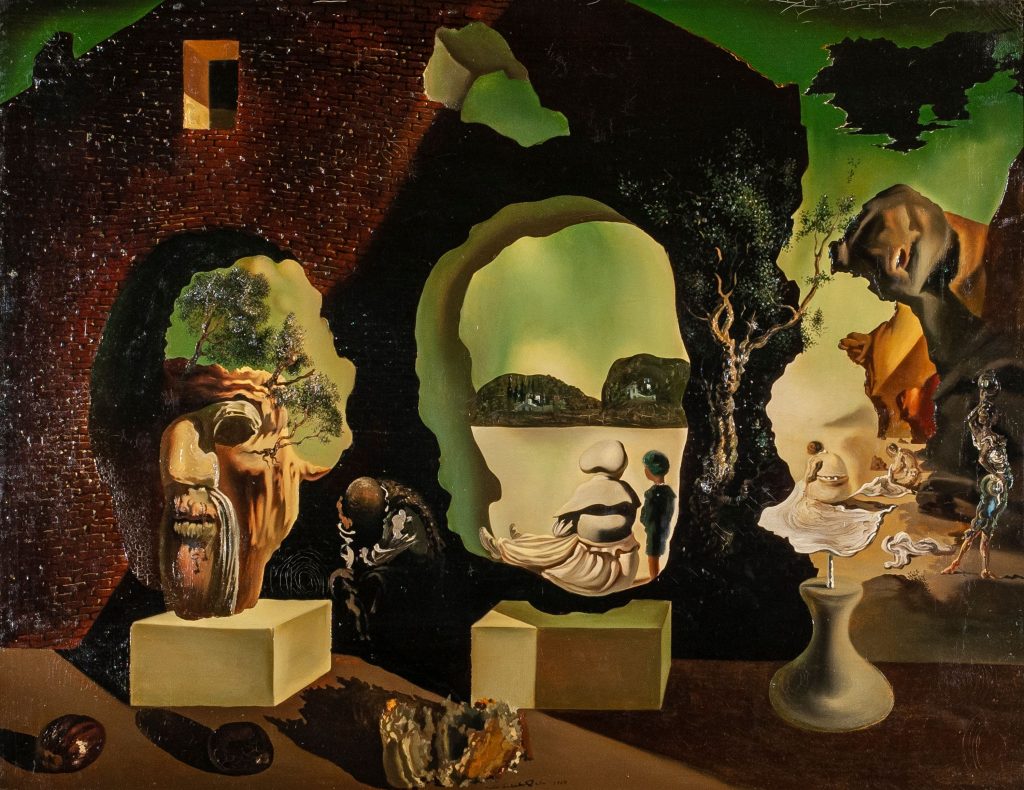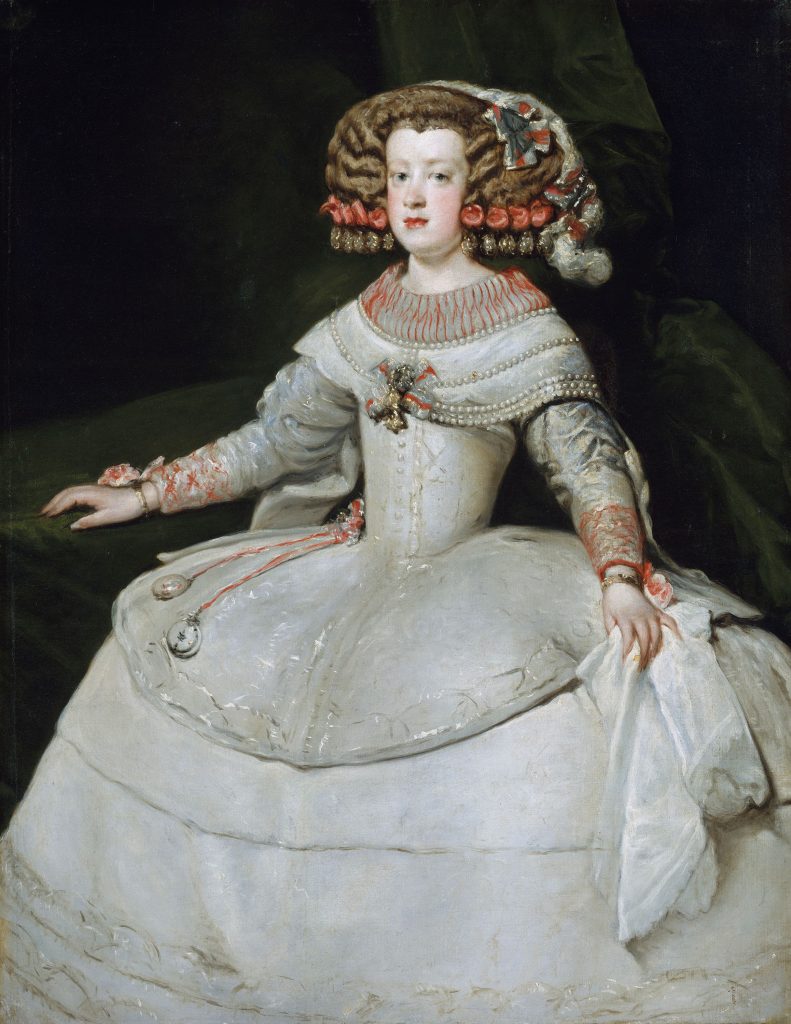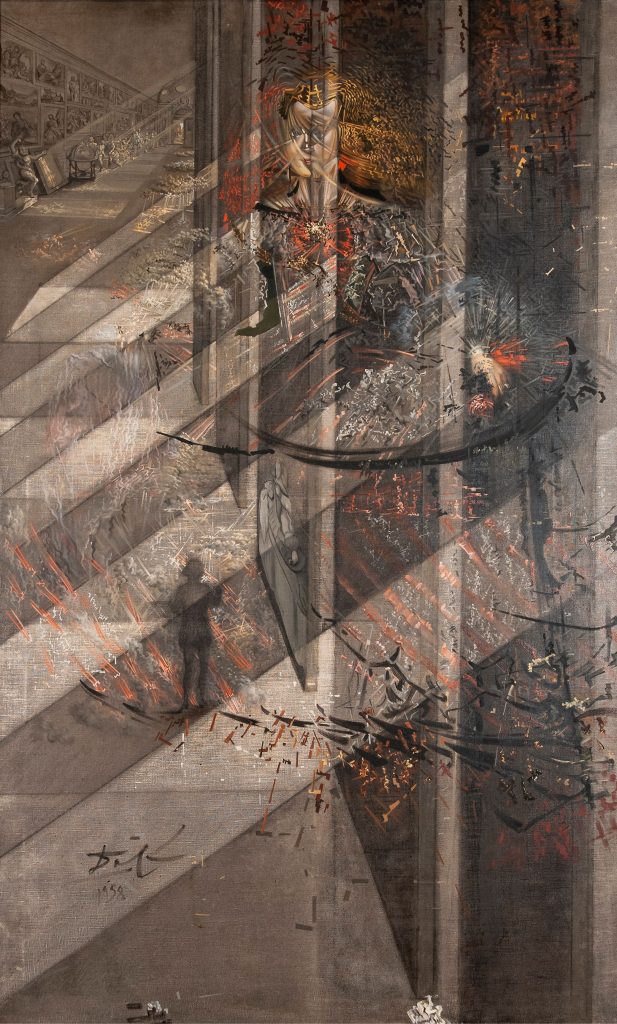by Bruce Sylvester

Collection of The Dalí Museum, St. Petersberg, FL (USA); Gift of A. Reynolds & Eleanor Morse
Courtesy Museum of Fine Arts, Boston
With his melting watches and disembodied human limbs, Salvador Dali was perhaps the ultimate surrealist of the previous century. The movement’s early leader, Andre Breton, said that the goal of surrealism was to resolve the previously contradictory conditions of dream and reality into an absolute reality, a super-reality. But Dali also paid homage to his forebears in his own bizarre style. That’s the point of the Museum of Fine Arts’ astounding new show “Dali: Disruption and Devotion,” which brings together old masters that influenced him and his own works, reflecting and building on them in ways that only Dali could imagine.


Gift of Charlotte Nichols Greene in memory of her father and mother, Mr. and Mrs. Howard Nichols
Photograph © Museum of Fine Arts, Boston
right: Velázquez Painting the Infanta Marguerita with Lights and Shadows of His Own Glory, 1958 Salvador Dalí, oil on canvas
Collection of the Dalí Museum, St. Petersburg, FL; Gift of A. Reynolds & Eleanor Morse
Courtesy Museum of Fine Arts, Boston
The show reaches back to the Medieval Netherlands for works in the nightmarish vein of Hieronymus Bosch, moving forward to two of Dali’s heroes: his fellow Spaniards Goya and Velazquez. We see a few of his reimaginings of Goya’s Los Capricos along with the originals. Dali disassembled a 17th-century royal portrait by Velazquez and then fractured, pruned, and recreated it in a 20th-century way. Some people think that Dali’s trademark handlebar mustache was inspired by Velazquez’s, which we see in a royal portrait that includes him doing the painting.
Surrealists saw no need to present the human figure completely and accurately. In a painting of two adolescents, only one face has mouth, nose, and eyes. In another painting of two people, only one shadow is accurate. As for those expendable scientific laws such as gravity, water can spill up.
The show’s excellent wall notes point out that Dali used rhinoceros horns to show the perfect order of nature since the horn develops in a logarithmic spiral.
Dali lived from 1904 to 1989. Though his father was an atheist, Dali became a devout Catholic well into his adulthood. A minimalist “Christ in Perspective” done in red chalk on paper looks at Jesus from above at an angle that makes his torso look like a pelvic bone.
Elsewhere, the heads of three women standing together become in another sense the bottom of a larger bust of Voltaire.
With about 100 items, the Museum of Fine Arts’ show “Dali: Disruption and Devotion” presents an artist who knew no bounds as he reconstrued classic art from earlier centuries that had thrilled and inspired him. The show is on view through December 1.
By the way, the show doesn’t mention this – it can’t mention everything – but Dali lived in the U.S. for various periods and did work for Walt Disney.
